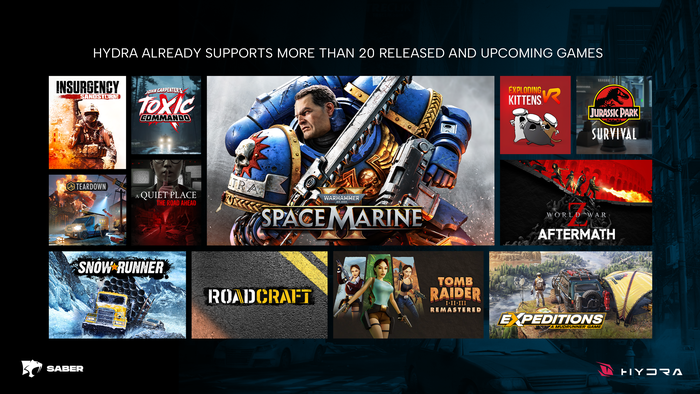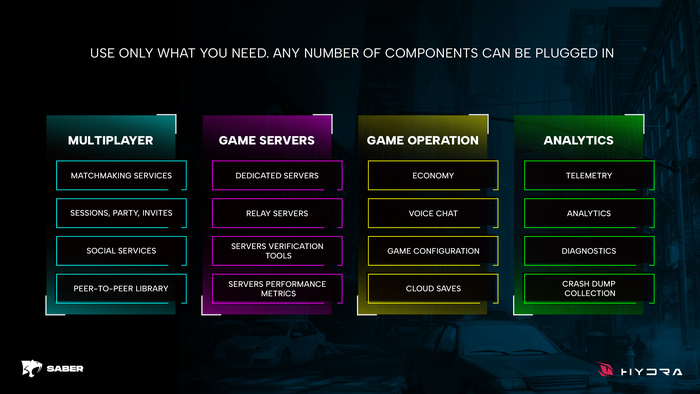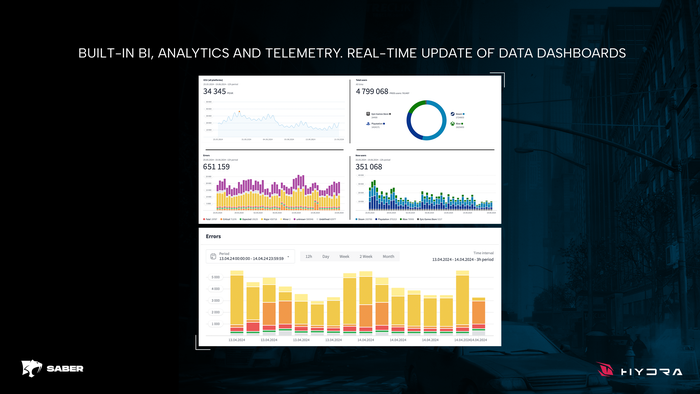Trending
Opinion: How will Project 2025 impact game developers?
The Heritage Foundation's manifesto for the possible next administration could do great harm to many, including large portions of the game development community.
Head of game services at Saber Interactive Dmitri Brevdo speaks to the advantages of an all-in-one backend platform
February 5, 2025

Hello everyone, I’m Dmitri Brevdo, Head of Game Services at Saber Interactive. Today, I’d like to share some key insights into developing seamless multiplayer experiences for games, something that often has its fair share of challenges—including the complexities of backend service integration and some universal lessons that may be helpful to anyone working on multiplayer projects.

One of the biggest hurdles in creating engaging multiplayer modes is ensuring a seamless online experience for players. This usually involves a ton of backend services like matchmaking, dedicated server hosting, cross-progression, and game analytics, each of which comes with its own set of technical challenges. Many studios rely on third-party tools to handle these components, but managing multiple services can quickly become overwhelming. Each service often introduces new SDKs, potential integration conflicts, and added layers of complexity that can negatively impact game performance. Developers across the board have likely encountered these frustrations, where the different systems hinder rather than help their game development.
In response to these challenges, we developed Hydra, an all-in-one backend platform designed to streamline and simplify operations. Hydra was created with modularity at its core, allowing us to customize the backend setup by plugging in only the components we need. It integrates services like matchmaking, analytics, social features, and communication tools into a single, cohesive framework. This not only reduces the need for multiple SDKs but also mitigates integration conflicts, allowing our team to focus on crafting better player experiences. With a scalable and flexible architecture, we’ve been able to support projects like Warhammer 40,000: Space Marine 2, which handled over 5 million multiplayer sessions daily and managed peak loads of more than 400,000 concurrent users in its first month.
To break this down, we wanted to address as many of these common challenges as we could. Here is what that looks like.

By unifying services, development teams can reduce integration overhead and allocate more resources to enhancing gameplay features. For example, many successful projects have adopted modular solutions that allow teams to plug in only the components they need. This modular approach is particularly beneficial in session-based multiplayer games, which demand a bunch of matchmaking and social features, as well as scalable voice and text communication. Ultimately, prioritizing a consistent and scalable backend architecture significantly enhances the player experience while minimizing the risk of technical issues during peak player loads.
Another area worth highlighting is the management of in-game economies and live operations. Virtual stores, loot systems, and dynamic pricing models are critical for maintaining player engagement and driving revenue. Yet, these features also require real-time monitoring and the flexibility to adjust based on player behavior. Tools that offer intuitive web portals for analytics and configuration can empower developers to make informed, data-driven decisions. The broader takeaway here is that having the right infrastructure allows teams to be more responsive, rapidly implementing adjustments and capitalizing on opportunities as they emerge. Even beyond multiplayer features, effective game operations tools are indispensable for keeping communities active and satisfied.
Comprehensive diagnostics and analytics also play a crucial role in game development, a lesson that’s broadly applicable across different genres and platforms. Having access to real-time telemetry can mean the difference between a minor issue and a significant, game-breaking outage. Automated health monitoring, error tracking, and constant updates on key performance indicators enable studios to proactively address potential problems. This kind of preparedness isn’t just about crisis management; it’s about fostering a data-driven culture where every decision can be backed by insights into player behavior and system performance. Developers from indie teams to AAA studios can benefit from prioritizing this aspect of their infrastructure, ultimately supporting more stable and enjoyable player experiences.

In summary, whether you’re a small studio or part of a massive development team, simplifying backend operations, adopting flexible infrastructure, and leveraging robust analytics are lessons that resonate across the board. The goal is to create an online environment that enhances gameplay while giving teams the tools they need to be agile and responsive. By focusing on these core principles, developers can spend less time fighting technical fires and more time innovating and crafting unforgettable experiences for players.
You May Also Like